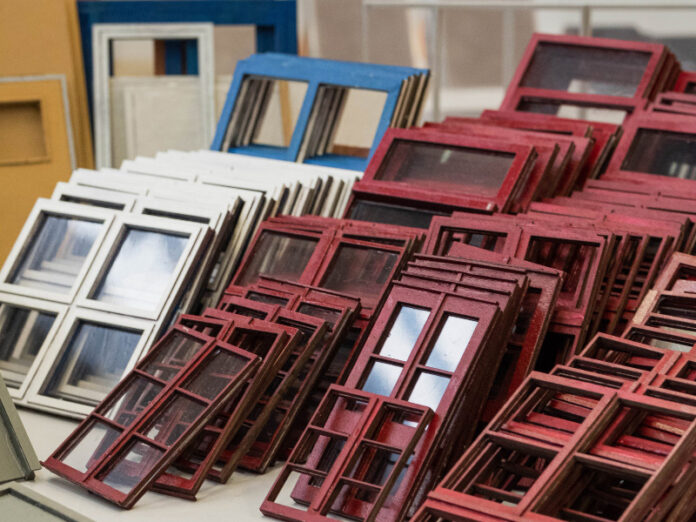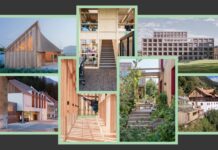
“Ban building!”, “Stop new construction!”, “We demand a demolition moratorium” – these are the provocative demands of many experts. In the exhibition “Refuse, Reduce, Re-use, Recycle, Rot” the Vorarlberger Architektur Institut examines strategies for an ecologically compatible building policy. Conclusion: The most ecological building project is the one that is not built.
Clemens Quirin, curator of the exhibition, draws attention to the bigger picture: “In the past 50 years, the number of buildings has almost doubled. In the same period, the population only grew by 20 %,” says Quirin. “The building sector is responsible for 40 % of our greenhouse gases. A significant part of this goes to the construction of buildings. Every day 12 hectares of land are sealed in Austria. And we are unable to limit construction to an acceptable level.”
The causes have been known for years. The main accelerator of the Austrian soil sealing is the system of municipal financing: It “rewards” municipalities that, in direct competition with their neighbouring municipalities, allocate more building land for business areas and new residential construction with higher municipal tax revenues and financial equalization funds from the federal government. Against this background, trading groups, businesses and residential developers can successfully conduct a blackmail game between communities: “If I’m not allowed to build my supermarket directly at the roundabout in your community, then I’ll just build it 400 m away in the neighbouring community.” Nowhere in Europe exist more m² of retail space per inhabitant than in exposed regions in Austria.
At the same time, we have enormous vacancies in the historic town centres, both in the commercial areas on the ground floor and in the housing stock. Quirin reduces this problem to a simple question: “Before you start building, you should ask yourself: Do I have to build at all? Couldn’t you perhaps use existing buildings?”
The exhibition is not limited to highlighting individual successful pilot projects, but rather traces the systemic fundamental questions that must be solved for an ecologically and economically compatible building policy. The exhibition reduces the strategic approaches to this to 5 Rs:
Refuse: In the sense of refusing to construct new buildings if the same building function could be accommodated in existing old buildings.
Reduce: In the sense of reducing space and resource consumption wherever possible. New forms of work allow for reductions in office space. Many single people live in living spaces for entire large families. Instead of continuing to build, it would make much more sense to promote land redistribution and reduction strategies and the accompanying management required for this. New technologies can help reduce the amount of construction materials consumed: carbon fibre reinforced concrete, for example, can achieve the same load-bearing capacity as conventional reinforced concrete using a fraction of cement and sand.
Re-use: In the sense of reusing components that already exist in old buildings. Many components of old buildings can be reused if they are professionally removed. However, this “urban mining” requires a fundamental reorientation of the demolition and recycling industry. And it also requires completely new ways of thinking and planning processes from architects: Instead of just drawing up designs on the computer and then ordering the customized components from industry, they first have to make sure: What material is available to me. And what can be made of it?
Recycle & Rot: Behind this is the requirement to only use recyclable and renewable materials if possible. Which were taken from nature and can rot again in it: wood, rammed earth, natural insulation materials, etc.
These strategic approaches also include a very important economic policy aspect that is particularly important for resource-poor Europe: The 5 Rs have an enormous employment effect while at the same time reducing resource consumption. In the area of renovation and the reuse/recycling economy, many new workers are needed, especially in small and medium-sized companies.
The only things standing in the way are the lobbying interests of the construction and real estate industry and the local emperors’ zoning benefice.
—
REFUSE, REDUCE, RE-USE, RECYCLE, ROT
vai – Vorarlberger Archichtektur Institut
29.09.2023 – 24.02.2024
www.v-a-i.at











